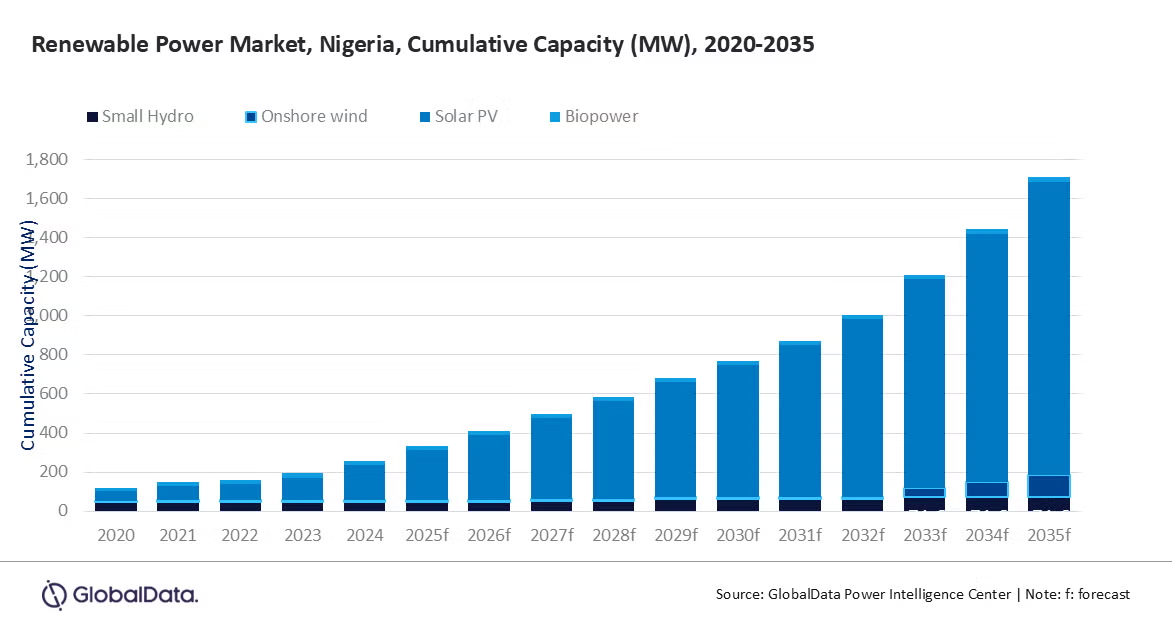Lagos — Nigeria’s renewable energy sector is set to grow exponentially, with projections indicating the country’s installed renewable power capacity will reach 1.7 gigawatts (GW) by 2035, according to a new report by GlobalData.
The growth will be driven by significant investments in solar PV, small hydropower, and biomass under Nigeria’s Renewable Energy Master Plan (REMP). GlobalData forecasts a compound annual growth rate (CAGR) of 18.9% for renewable power between 2024 and 2035..

🔎 What’s the Story?
The report, titled “Nigeria Power Market Outlook to 2035”, also estimates that Nigeria’s total power generation will grow at a CAGR of 17.5% to reach 1.8 terawatt-hours (TWh) by 2035.
While the country still relies heavily on thermal power from its vast natural gas reserves, increasing attention is being placed on renewables—especially solar PV—to solve the dual challenges of energy poverty and an unreliable grid.
“Consumers’ preference for solar PV arises from the demand for dependable power,” said Attaurrahman Ojindaram Saibasan, Senior Power Analyst at GlobalData.
Why It Matters
Nigeria’s growing urbanization and energy-hungry industries—from cement and food processing to healthcare and education—are pushing up electricity demand. But with many still relying on diesel generators, true energy needs far exceed grid data.
Renewables, especially distributed solar power (DSP) with storage solutions, are seen as the best-fit solution.
Key Numbers
Target Share of Renewables:
23% by 2025
36% by 2030
2035 Capacity Forecast:
1.7 GW installed renewable power
Power Generation (2035):
1.8 TWh
Projected CAGR (2024–2035):
18.9% (Renewables), 17.5% (Total generation)
What’s Driving the Boom?
The very essence of work and workplace has been reimagined this year. With the advent of remote working technologies and a globalized workforce, professionals aren’t chained to a desk or a city. Beaches, quaint cafes in historic towns, and serene mountain retreats are becoming the new “office” for many. But it’s not just work that’s breaking boundaries; it’s also how we choose to spend our leisure time.
Travel in 2023 is less about sightseeing and more about experiencing. Tourists today are keen on immersing themselves fully, be it by living with local communities or participating in native traditions. This search for authenticity in travel is further enhanced by technological innovations. Augmented reality tours, AI-driven travel suggestions, and virtual explorations are bridging the gap between the real and virtual, ensuring travelers get the best of both worlds.



